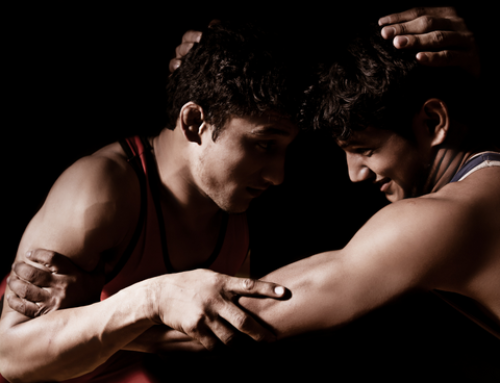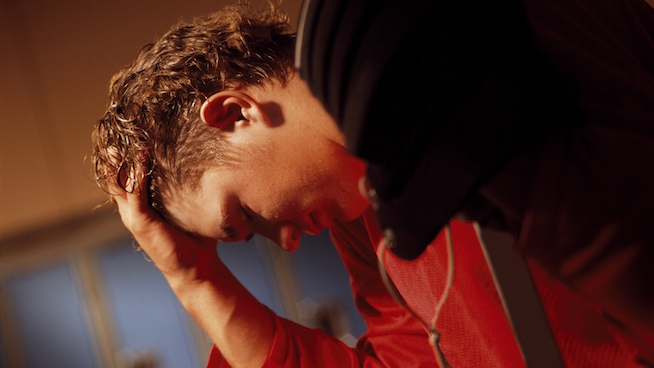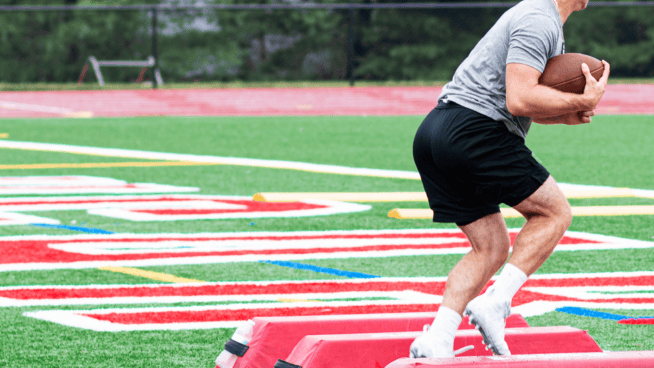A Wrestling Warm-Up That Will Prepare Your Body for the Mat
A wrestling warm-up should be different from a warm-up for cross country, basketball or weight training. A wrestling warm-up should be specific for the sport, focused on reducing injury, increasing flexibility and improving performance.
However, a cloud of confusion exists over static stretching, dynamic stretching and their relationship with flexibility, power and performance.
Traditionally, coaches start with static stretching or light aerobic work followed by static stretching. People like to hold onto traditions, and they tend to fall in love with “the way we’ve always done it!”
A second wave of confusion likely comes from studies reporting decrements in performance after performing static stretching. However, in 2011 a review of over 100 studies concluded that static stretching improves flexibility, with the caveat that static stretches should not be held for more than 60 seconds if part of a warm-up.
But often, this is where uninformed wrestling warm-ups end. Range of motion may be improved, but little is done to actually prepare the body for high performance on the mat.
This is where dynamic stretching comes into play.
Dynamic stretching includes sprint mechanics drills (e.g., Power Skips), active stretches (e.g., Reverse Lunges With Overhead Reach), calisthenics (e.g., Jumping Jacks), hurdle drills or any other exercise that takes the body through the ranges of motion used on the mat. This type of work has been shown to improve speed (2009), strength (2009), flexibility (2007) and increase muscle activity (2008).
Yes, you read that right. Wrestlers should work on sprint mechanics even though they don’t actually sprint on the mat.
The position and shin angles of sprinters are similar to the position and shin angles of a leg attack. Great open leg attackers are able to extend their hips fast. This involves coordinating the glutes and hamstrings. A sprinter must coordinate his glutes and hamstrings for hip extension, otherwise, he will be slow.
See where I’m going with this? There is much crossover from sprinting to wrestling, especially from the acceleration portion of a sprint.
In addition, before taking the mat, wrestlers should use a method called post-activation potentiation (PAP) to maximize their explosive power.
PAP is typically used during strength training workouts to maximize explosive power. A strength exercise such as a near-maximal Squat is followed by a plyometric movement that uses a similar movement, such as a Squat Jump, to trick the nervous system into creating more power.
However, it can also be used to prepare for a wrestling match.
A study out of the University of Oregon found that horizontal jump performance improved after a dynamic warm-up combined with 5 sets of Power Snatch (68-77% of 1RM). The study didn’t look at wrestling specifically, but few moves are more similar to the skills needed for wrestling than the Horizontal Jump.
How do you use PAP? It’s simple.
After your dynamic warm-up, perform a lift that induces PAP, such as squatting as fast as possible for 3-5 sets of 1 rep at 95% 1RM. Rest for 5 minutes after the lift before you get on the mat.
Now that you understand the concepts, here is my recommended wrestling warm-up for both novice and advanced wrestlers.
Warm-Up for Wrestlers
- Jog or Airdyne Bike – 3-4 minutes
- Light stretch (Hip flexors, hamstrings, calves, lats) – 2-3 minutes
- A-Skips – 2×15 seconds with 30 seconds rest
- Power Skips – 3×10 seconds with 45 seconds rest
- Wall-Acceleration Drill – 1×8 each leg, each exercise
- Block Starts – 5-6 with 1 minute rest
- Olympic lift (Power Clean, Snatch, etc) – 3×2 @ 60-90% max
Final word: if you’ve found a way to warm up for wrestling that improve your performance, use it and spread the word! Certainly some aspects of performance can elude scientists. You need to do what works best for you.
READ MORE:
RECOMMENDED FOR YOU
MOST POPULAR
A Wrestling Warm-Up That Will Prepare Your Body for the Mat
A wrestling warm-up should be different from a warm-up for cross country, basketball or weight training. A wrestling warm-up should be specific for the sport, focused on reducing injury, increasing flexibility and improving performance.
However, a cloud of confusion exists over static stretching, dynamic stretching and their relationship with flexibility, power and performance.
Traditionally, coaches start with static stretching or light aerobic work followed by static stretching. People like to hold onto traditions, and they tend to fall in love with “the way we’ve always done it!”
A second wave of confusion likely comes from studies reporting decrements in performance after performing static stretching. However, in 2011 a review of over 100 studies concluded that static stretching improves flexibility, with the caveat that static stretches should not be held for more than 60 seconds if part of a warm-up.
But often, this is where uninformed wrestling warm-ups end. Range of motion may be improved, but little is done to actually prepare the body for high performance on the mat.
This is where dynamic stretching comes into play.
Dynamic stretching includes sprint mechanics drills (e.g., Power Skips), active stretches (e.g., Reverse Lunges With Overhead Reach), calisthenics (e.g., Jumping Jacks), hurdle drills or any other exercise that takes the body through the ranges of motion used on the mat. This type of work has been shown to improve speed (2009), strength (2009), flexibility (2007) and increase muscle activity (2008).
Yes, you read that right. Wrestlers should work on sprint mechanics even though they don’t actually sprint on the mat.
The position and shin angles of sprinters are similar to the position and shin angles of a leg attack. Great open leg attackers are able to extend their hips fast. This involves coordinating the glutes and hamstrings. A sprinter must coordinate his glutes and hamstrings for hip extension, otherwise, he will be slow.
See where I’m going with this? There is much crossover from sprinting to wrestling, especially from the acceleration portion of a sprint.
In addition, before taking the mat, wrestlers should use a method called post-activation potentiation (PAP) to maximize their explosive power.
PAP is typically used during strength training workouts to maximize explosive power. A strength exercise such as a near-maximal Squat is followed by a plyometric movement that uses a similar movement, such as a Squat Jump, to trick the nervous system into creating more power.
However, it can also be used to prepare for a wrestling match.
A study out of the University of Oregon found that horizontal jump performance improved after a dynamic warm-up combined with 5 sets of Power Snatch (68-77% of 1RM). The study didn’t look at wrestling specifically, but few moves are more similar to the skills needed for wrestling than the Horizontal Jump.
How do you use PAP? It’s simple.
After your dynamic warm-up, perform a lift that induces PAP, such as squatting as fast as possible for 3-5 sets of 1 rep at 95% 1RM. Rest for 5 minutes after the lift before you get on the mat.
Now that you understand the concepts, here is my recommended wrestling warm-up for both novice and advanced wrestlers.
Warm-Up for Wrestlers
- Jog or Airdyne Bike – 3-4 minutes
- Light stretch (Hip flexors, hamstrings, calves, lats) – 2-3 minutes
- A-Skips – 2×15 seconds with 30 seconds rest
- Power Skips – 3×10 seconds with 45 seconds rest
- Wall-Acceleration Drill – 1×8 each leg, each exercise
- Block Starts – 5-6 with 1 minute rest
- Olympic lift (Power Clean, Snatch, etc) – 3×2 @ 60-90% max
Final word: if you’ve found a way to warm up for wrestling that improve your performance, use it and spread the word! Certainly some aspects of performance can elude scientists. You need to do what works best for you.
READ MORE:









